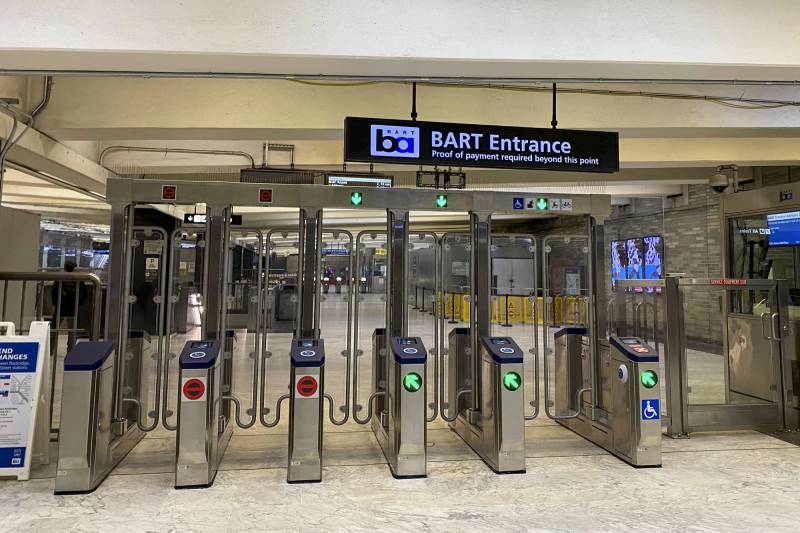“This is something our riders have been telling us they want,” Duckworth said. “A lot of riders don’t want to see other people not paying to get into the system when they’re paying to get into the system.”
At the West Oakland station, where the gates were first installed in late December, over 1 million entries and exits were recorded in the first six months. According to Duckworth, that’s 120,000 more than the station recorded during the same period last year—an 11% increase versus 6% systemwide.
“I think this should be the way forward,” Shubh Ranjan, a frequent BART rider, told KQED on Monday at the Civic Center station. “People don’t try to bypass you, so this is a good thing, a good initiative.”
He noted that the gates were easy to use and that he had no trouble getting through the doors.
The new gates feature mechanical locks that make it difficult to push through without first paying. With the new gates, riders will also be able to use Apple and Google Pay on their phones to pay their fare directly, although the Clipper card will still be in use.
BART still has 49 stations, including the Civic Center, awaiting new gates.
The gates are produced by a South Korean vendor, so BART staff will have to wait for the next delivery of parts, which is scheduled for Aug. 14. Installation of the next gates at Civic Center is set to begin on Aug. 16, Duckworth said, after which BART will begin installing gates at Oakland’s Fruitvale station.
According to Duckworth, the transit system is still on track to finish the project by the end of next year.


